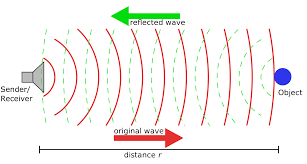
The best defense against danger is to see it coming and avoid it. Kung-Fu experts can walk down dark alleys and defend themselves, but for the rest of us it is easier to just avoid dark alleys! Your motorcycle risk sense is mainly based on vision, which here means scanning. Scanning is not just normal looking. Normal looking say at a photograph or a book is about recognizing things, whether faces, objects or words. It is like a searchlight that illuminates one object. In contrast scanning is like sonar that checks for danger all directions.
Scanning is all-round vision
Everyone has two types of vision:
- Focal vision recognizes things in a small focus.
- Scanning identifies things moving anywhere in your field of vision.
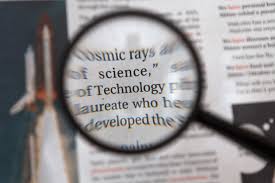
You use focal vision when you read a book and focus on letters and words, but one cant take in a whole page at once this way. The focus has to move from line to line. In contrast scanning takes in everything in the field of view in at once, looking for movement and object contrasts. In our book/media world we habitually use point vision, but all-round scanning is the key to motorcycle safety.
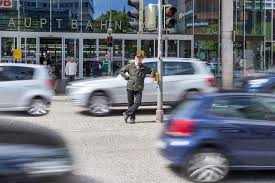
Scanning is what your eyes do when you look at nothing in particular.To activate it, just stop focusing.Try it now – look up and just look around without focusing. Now your eyes take in everything around you, not just one or two things. Scanning is the opposite of focusing, which gives “tunnel vision”, a major cause of motorbike accidents. Scanning tells you when anything changes anywhere, not just at some focus.
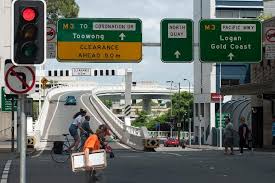
Scanning is your radar
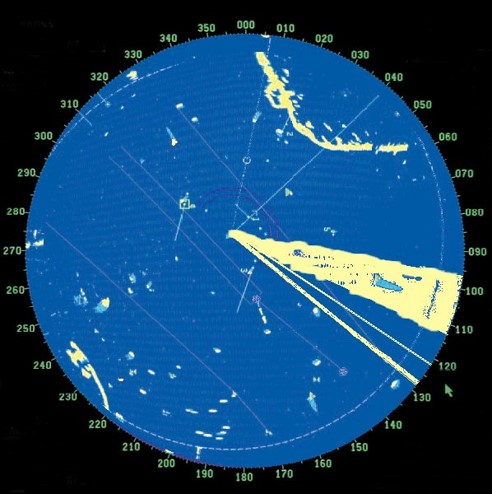
Radar first sweeps a broad area to detect all incoming objects. Then when an object is detected, a more advanced (but slower) recognition system focuses on whether it is friend or foe. The two steps are:
- Scan for objects over a wide area.
- Recognize selected targets.
It has to work this way because initially one doesn’t know where the danger is. Your eyes work the same way for the same reasons. First peripheral vision identifies objects and movement everywhere, then foveal vision recognizes objects when you focus on them. If you look directly at something, that is foveal vision. If you see a thing “in the corner of your eye” that is peripheral vision. Why is this important? Because peripheral all-round vision is critical to riding safely.
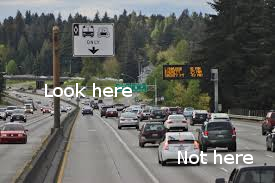
Peripheral vision activates when we look in the distance at nothing special. If you focus on anything, like reading a sign, it shuts off. When riding, focus on the cars ahead not down at the car in front of you. Set your scanning radar at maximum to give the best early warning. If you look to the distance, your vision automatically takes in the car in front of you. If anything happens to it you will know directly. If a car unexpectedly comes towards you, you don’t need to know if it’s a Holden or a Ford! Recognition is irrelevant. You only need to know from where and how fast it’s coming! Your all-round vision will tell you this. Even better, it does so for your entire field of view. To ride safely, always look many cars ahead.
Road signs can distract
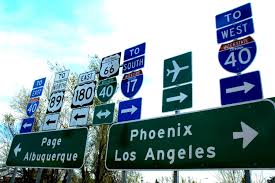
Reading road signs, or looking for street numbers, is dangerous because it deactivates your all-round vision. If you see a driver going very slow, or driving erratically, they are often trying to read signs or street numbers. Be very, very careful! Their all round vision is probably disengaged, making them literally blind to anything outside their focus. This tunnel vision means they may not see something as small as a motorcycle. In addition, their purpose may make them suddenly turn left or right. People reading road signs are dangerous because their all-round vision is disengaged.
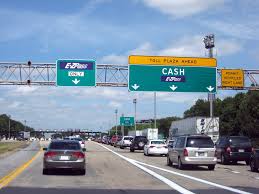
Mirror blind spots
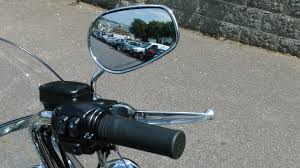
Motorcycle mirrors have “blind spots”. Sometimes you look in your mirror and see nothing in the lane next to you, then a car goes by in that lane from “out of nowhere”. It came from the mirror blind spot. It is scary when a lane you thought was empty produces a speeding car. The blind spot is about 45 degrees out from the mirror. By all means use your mirrors, but never fully trust them. For critical moves like changing lanes on a busy highway, use direct sight.
Direct sight

Direct sight is when you turn your head and look over your shoulder to see traffic behind directly, in your peripheral vision. I always direct sight when changing lanes. Once I did an experiment, first using my mirrors then direct sighting to check before actually changing lanes. Within a month the mirror said “clear”, and I turned my head to see an oncoming car. This isn’t very frequent, but on a motorcycle it only takes one case. Direct sight is the best sight because it is 100% sure.
Direct sight sounds simple but turning your head without turning the bike takes practice. When beginners turn their head, the bike also moves that way, which is bad! Practice turning your head but not turning the bike. While riding straight, briefly turn your head to sight back to the area behind you. Don’t focus behind, just turn your head and use your peripheral vision. Just a glance tells you 100% if anything is there. As you turn your head, keep your body and shoulders straight so the bike doesn’t move. When you direct sight, the bike must not wobble. Decouple scanning done by the head from control of the bike by the body. When you can direct sight back without the bike wavering, you have a 100% reliable behind check (unlike the 99% reliable mirror check). Since turning your head can unsettle the bike, its not really for beginners. If you cant turn your head without wobbling then dont do it. I dont direct sight if the weather is so bad it is dangerous to turn your head, even for a moment. The alternative then is The Slow Move.
The riding skeptic
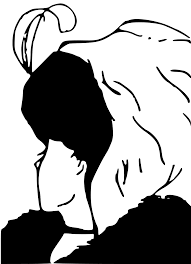
Our brain is good at telling us what we want to know. In the picture you see a young lady, but look again and it is an old lady! In the same way, your brain can tell you all is clear when it is not. A skeptic is someone who doesn’t believe but has to see everything for themselves. A riding skeptic is the same – they work on direct sight not assumptions. So while a green light should mean that other cars are stopped, you still look either side as you go. This is a healthy skepticism.
Dead space
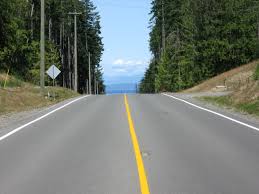
When scanning the world, one needs to know where the scan doesn’t work. Dead space, like blind spots, is space you cant see so you don’t know what is there. It is called dead space because it can make you dead. When turning a corner into a cliff you are going around into dead space. When going up a hill and you cant see the other side that is dead space. In the city, dead space is called a blind spot, a spot where something could be hidden, e.g. parked trucks can easily hide a pedestrian standing between them.
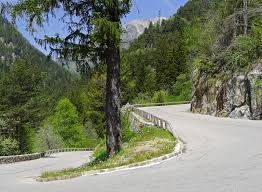
Accidents happen when dead space is assumed empty but is not. The answer to dead space is not x-ray vision but to approach with caution. Don’t assume dead space is empty. If you come to a hill and cant directly see the other side, recognize it as dead space. It is probably clear but there may be a broken down car or even a cow on the road. If you cant see directly then drop a gear, slow down and cover the brakes.
Live cars

You see lots of cars parked on the roadside as you ride along. Those with no-one in them are “dead”, and those with someone in them are “live”. The difference is that live cars can suddenly pull out or fling open open doors, so you give them more distance.